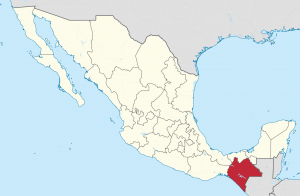By Liam Bradshaw
As we grit our teeth through anger, frustration, or just sheer ennui, waiting for the farcical debacle that is the US presidential election to end, a proposal has emerged from Mexico that might just breathe a bit of life into electoral processes.
October marked the twentieth anniversary of the National Indigenous Congress (CNI – Congreso Nacional Indígena), a Zapatista initiative to unite an array of indigenous groups in resistance across Mexico, and the Congress held its fifth encounter from the 9th to the 13th at the University of the Earth (CIDECI) in San Cristobal de Las Casas, Chiapas. Over five hundred delegates attended, along with hundreds of national and international observers.

As the first day of meetings was held behind closed doors, rumours abounded as to what the content of the discussions were. News began to trickle out that there was a proposal to transform the Congress into a political party. Such an idea is anathema to followers of the Zapatista movement, which has largely eschewed electoral politics and the party political system since emerging on to the world stage in 1994. Heated debate followed among those present on the grounds of CIDECI.
On the second day it became clear that the actual proposal was to field an indigenous woman candidate in the 2018 Mexican presidential elections. This came like a bombshell, as many saw it as an act of betrayal of principles and a first step on the road mainstream politics. One compañero imagined SCI Galeano (the ‘face’ of the Zapatista movement) violently biting his pipe, smoke pouring from his ears and chewing on his balaclava at such a thought. It should be remembered that the Zapatistas have gained international renown for their rejection of traditional political systems, and their construction of self-governing autonomous communities from below.
As the day progressed, it became clear that the proposal had actually come from the Zapatistas. Not only were they proposing to field an electoral candidate, but this independent candidate would simply be the mouthpiece for an Indigenous Governing Council, not a political party. Furthermore, they announced that the CNI should take the lead ahead of the Zapatistas in this process, evidenced by the fact that the EZLN (Ejército Zapatista de Liberación Nacional – Zapatista Army of National Liberation) took their seats at the back of the auditorium when the proposal was being discussed.
The next day, October 12, saw the encounter move to Zapatista heartland at Oventik, Chiapas, to mark Indigenous Resistance Day. It turned out to be an upbeat occasion, with the Zapatistas showcasing many of the pieces that they had prepared for their CompArte arts festival in summer. This included songs about resistance, dances that showed women taking their place to the forefront of Zapatista communities, and theatre that recalled the rising of ’94. It also provided an opportunity for people to exchange ideas on the proposal in a more relaxed setting.

What should have been the final day of the encounter was an example for all present of what participative democracy actually looks like in practice. Most of the day was spent clarifying and fine-tuning the details of the proposal among the delegates, so that it would be acceptable to all, and could take it to their communities across the national territory for further debate before deciding what action to take. The final statement of the encounter was debated and open to all delegates to add to or edit. With the proposal and statement agreed by unanimous consensus, the Congress declared itself in permanent assembly until the results of a consultation with the peoples have been made public at the end of December.
The final statement, titled “May the Earth Tremble at its Core“, was published next day. For anybody who was left with any doubts as the intentions of the Congress and the Zapatistas, it reiterated that the decision as to whether to field a candidate or not first depended on “a consultation in each of our communities to dismantle from below the power that is imposed on us from above and offers us nothing but death, violence, dispossession, and destruction”. The statement goes on to say that the purpose of this consultation would be “to name an Indigenous Governing Council whose word will be carried out by an indigenous woman, a CNI delegate, as an independent candidate to the presidency of the country under the name of the National Indigenous Congress and the Zapatista Army for National Liberation in the electoral process of 2018”. Perhaps most importantly, it concludes with a description of their motivations-
“We reiterate that our struggle is not for power, which we do not seek. Rather, we call on all of the original peoples and civil society to organize to put a stop to this destruction and strengthen our resistances and rebellions, that is, the defense of the life of every person, family, collective, community, or barrio. We make a call to construct peace and justice by reweaving ourselves from below.”
So the Congress is not proposing a single election candidate, but a council that will be represented by an indigenous woman. It isn’t proposing a candidate solely for indigenous people, but for all of Mexican civil society that is disillusioned with and disconnected from the political system. It is not running for election in order to gain office, but to encourage people to organise from below. The proposal certainly did shake the Mexican political system, and was met with harsh reactions from the mainstream political parties and media, often with troubling undercurrents of racism and sexism.
The coming weeks are sure to be interesting, as the consultation takes place across the country. If the grassroots do decide to field a candidate, what follows would be truly unprecedented. The very thought of an indigenous woman chosen by popular consultation, as opposed to a candidate hand-picked by a political party, is in itself totally contrary to Mexico’s stagnant political culture. The visibility and voice it will give to issues that are normally ignored by the mainstream media will be transformative. Whatever the outcome, it should make for a campaign that will be far more interesting than what we are currently witnessing in the US, with a candidate that would be truly outside the established political system.

